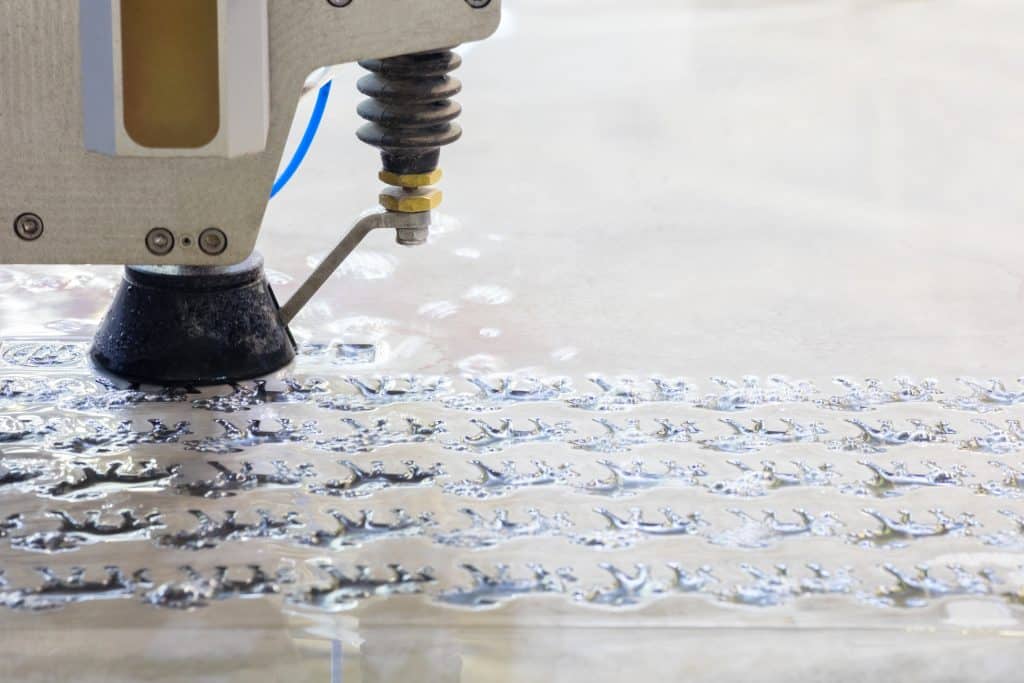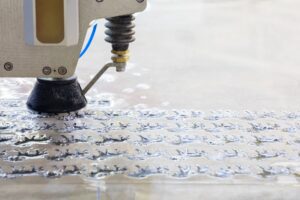The mysterious world of the waterjet cutting, steeped in tales and rumours, half-truths and hearsay…
Ok, It might be a bit of an over exaggeration, but the fact is; there are a lot of misconceptions about waterjet cutting, how it works, and what materials the process is best suited for. Let’s have a look at a few of the most enduring, and shed a little light onto them with some plain old facts:
One abrasive does all jobs, right?
Not exactly, the grit size (or mesh grade) of your abrasive can have an impact on quite a few different things, speed of cutting, finish and the wellbeing of your precious machine being the most important. Generally 80 mesh grit is the coarsest and least expensive. It will get the job done quickly, but if a smooth, fine finish is needed, or an intricate cut is required, then look for a finer mesh.
They’re better suited to this than that!
Again, it isn’t really the case, in fact quite the opposite. Waterjet cutting is adaptable and versatile, much more so than other forms of cutting, it is a method well suited to cutting everything from food to steel. The cold-cutting technique also makes it the best method for cutting heat sensitive materials such as wood.
It’s a messy, time consuming business!
Of course it takes forever, It’s just water, right? Well it is a water-based process of course, but that water is pressurised to anything from 20-60.000 PSI when combined with an abrasive, to slice through materials accurately and quickly. As for being messy, there might be a little mist, but that can easily be overcome by cutting beneath a small amount of water.
Materials don’t need to be held in place
Hmm… They absolutely do, remember those pressure levels above? That’s quite some pressure you are working with, don’t take safety for granted and ensure your work piece is correctly situated for the most accurate and safe results.
But I need complex and intricate 3D parts!
No problem at all…As well as being able to cut flat materials, waterjet cutting with a cutting head that is software controlled and can swerve directionally, allows you to work with materials up to 10 inches thick and craft pieces seamlessly and effortlessly in a single motion, meaning it is a fabrication method perfectly suited to cutting intricate and complex 3D components.
We hope our myth-busting exercise has helped you to see a little clearer, the benefits of waterjet cutting. Visit our site today to have a look at our range of CMS Waterjet Cutters
And as always, get in touch with any questions or queries.
Published 28th June 2018


